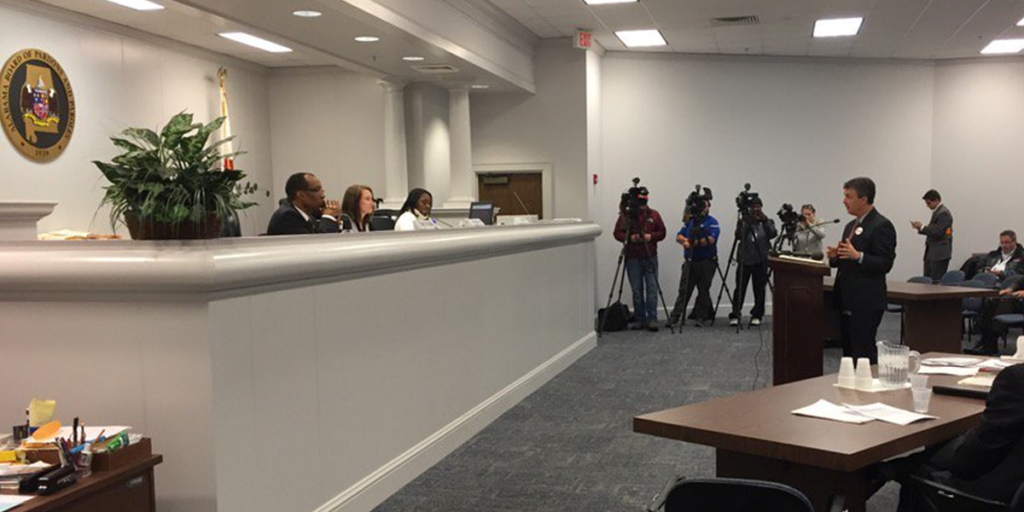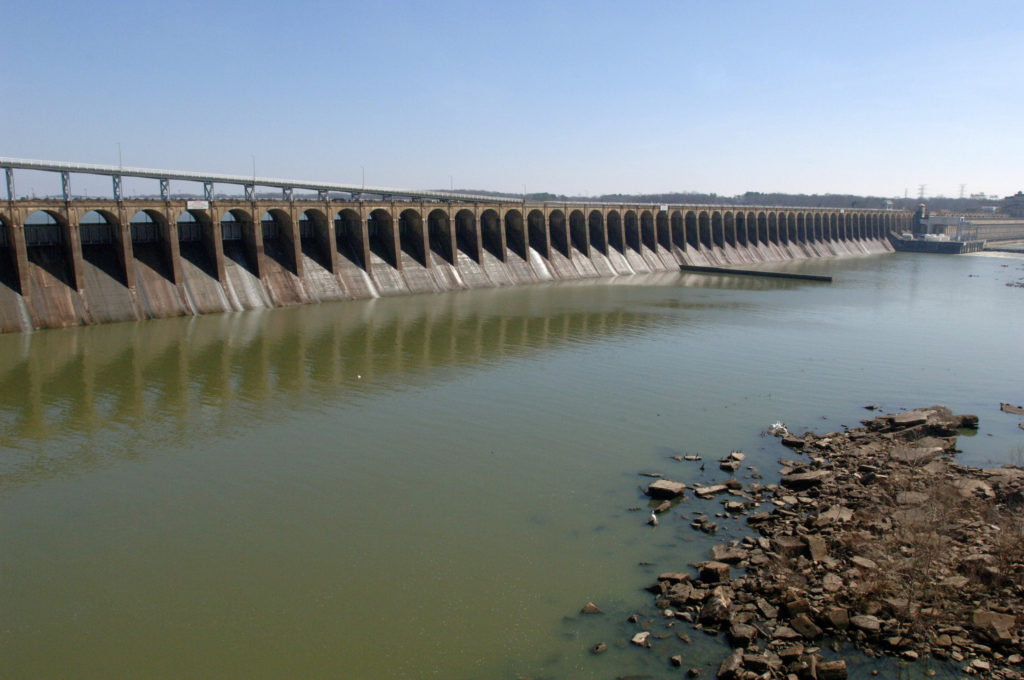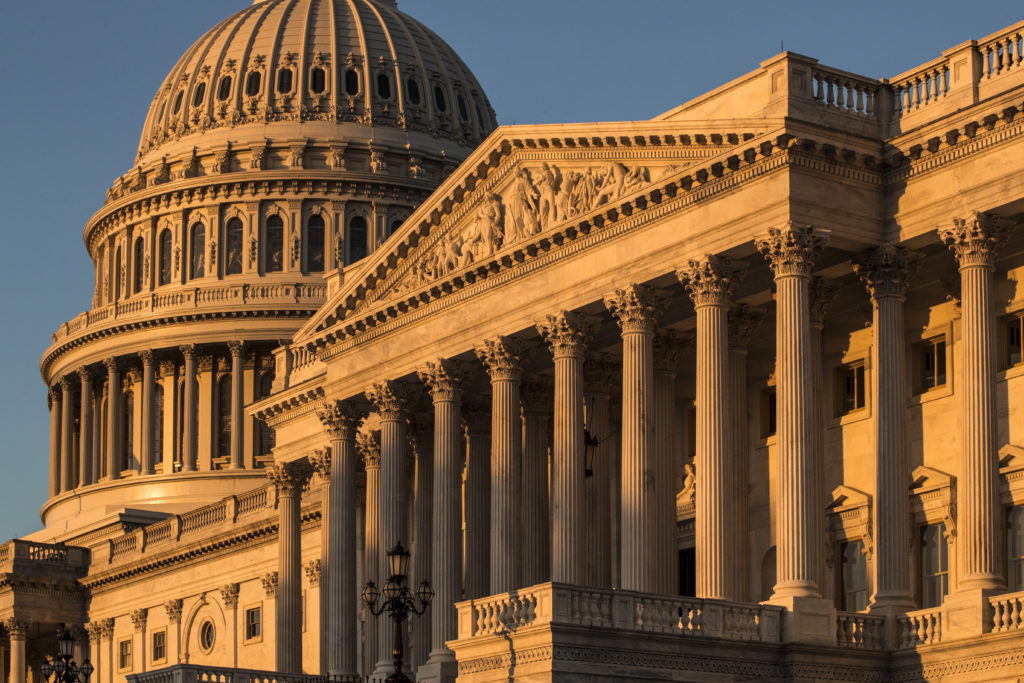US Steel, union announce 4-year pact covering Alabamians, others

Negotiators for US Steel Corp. and the United Steelworkers have announced an agreement on four-year contracts covering thousands of employees around the country. Details weren’t announced Monday pending ratification meetings, which the union said would take place in coming weeks. US Steel said the contracts cover about 14,000 union-represented employees. The union said its figure of 16,000 workers covered includes members laid off, on sick leave or on disability. Company officials said the contracts cover workers at it is domestic flat-rolled and iron ore mining facilities as well as tubular operations in Fairfield, Alabama; Lorain, Ohio; and Lone Star, Texas. The union says some workers in Illinois, Indiana, Michigan, and Minnesota are also covered. The contracts expired Sept. 1 but both sides agreed to extend talks that began in July. Republished with permission from the Associated Press.
Donald Trump asks GOP chair Ronna McDaniel to serve a second term

President Donald Trump has asked Republican National Committee Chairwoman Ronna McDaniel to serve a second term. That’s according to a person familiar with the president’s decision. The decision comes as the president looks to build out his team for his re-election campaign. As head of the RNC, McDaniel leads the party’s fundraising and voter mobilization efforts. McDaniel has accepted Trump’s offer. The RNC will hold an official vote in January. The person familiar with Trump’s decision was not authorized to discuss the matter publicly. Axios first reported that the president had asked McDaniel to stay on. Republished with permission from the Associated Press.
Doug Jones: Our HBCUs are at risk – we need to step up to protect them

Since 1867, Historically Black Colleges and Universities, or “HBCUs,” have played a vital role in Alabama’s higher education system. With 14 today, Alabama is home to the most of any state in the country. And as I said in a recent speech on the Senate floor, we don’t just have the most, we have the best. Tuskegee University is the only HBCU with a College of Veterinary Medicine, and the school produces over 75-percent of African-American veterinarians in the world. It has also just hired its first female university president, Dr. Lily McNair. Alabama A&M University is the only 1890 land grant university offering four Ph.D. programs. They are also the leading producer of African-Americans with Ph.Ds. in Physics. Oakwood University is the nation’s fifth-highest producer of undergraduate African-American applicants to medical school. Alabama State University is home to the National Center for the Study of Civil Rights and African American Culture. ASU is currently doing preservation work on some never-before-seen documents such as court notions, bond documents, and official papers connected to the Montgomery bus boycott. And Lawson State Community College was named a Champion of Change in 2011 by then-President Barack Obama. Today, there are over 100 accredited HBCUs, both public and private, in 19 states, the District of Columbia, and the U.S. Virgin Islands. They enroll approximately 300,000 students – 80-percent of whom are African-American and 70-percent are from low-income families. While HBCUs only make up three-percent of our country’s colleges and universities today, they produce nearly 20-percent of all African-American graduates. Among HBCU graduates, there are countless trailblazing Americans who have quite literally changed the course of our history as a nation: Dr. Martin Luther King, Jr., Thurgood Marshall, Marian Wright Edelman, Langston Hughes, Katherine Johnson. And according to the National Science Foundation, between 2002 to 2011, the top eight institutions where African-American Ph.Ds. in science and engineering earned their bachelor’s degree were all HBCUs. HBCUs annually generate $14.8 billion in economic impact and add more than 134,000 jobs for local and regional economies. Based on a report in 2014, Alabama HBCU graduates can expect total earnings of $130 billion in their lifetimes. I could go on and on. For all of these incredible achievements, HBCUs in Alabama and across the country are working against the strong headwinds of serious financial struggles. The Government Accountability Office recently investigated the capital finance needs of HBCUs. Its report estimates that 46-percent of all HBCU buildings are in need of repair or replacement. This is due to deferred maintenance, the evolution of higher education and technology, and the fact that many of these buildings are state or federal registered historic places. For example, Tuskegee University is designated as a National Historic Site by Congress. That is a remarkable figure – and it is wholly unacceptable. But this is not a surprise for those who understand the challenges these institutions have long faced. HBCUs lack a plethora of revenue sources – public HBCUs heavily rely on state and federal grants, appropriations, and bonds. Private HBCUs have to rely on private or alumni giving and tuition fees. On top of that, the GAO found that the average endowment of an HBCU is half the size of a similarly sized non-HBCU. None of the 90 institutions of higher education in the country with endowments greater than $1 billion is an HBCU. This results in an endless cycle for these schools that have contributed so greatly to our country and the talented students they serve. With their limited revenue sources and the discrimination they face in the bond market, it is difficult to maintain campus buildings that attract high enrollment. Lower enrollment just leads to even less tuition and fees collected. And the cycle continues. But I don’t just want to talk about problems without offering a solution. Recently, I introduced the Strengthening Minority-Serving Institutions Act that will permanently extend and increase federal funds to all minority-serving institutions. Most federal funds are currently set to expire after Fiscal Year 2019. My bill goes beyond just supporting our HBCUs, but is inclusive of other minority-serving schools like those that primarily admit Asian Americans, Pacific Islanders, Alaska Natives and Native Hawaiians, Native Americans, and Hispanic Americans, among others. With this legislation, we increase mandatory funding from $255 million to $300 million for these institutions. They will be able to put that money to good use for infrastructure improvements, technology upgrades, and other critical needs that have gone unfulfilled. This won’t solve all of the challenges HBCUs are working hard to overcome, but it’s a step in the right direction—and it’s the right thing to do for these schools that are part of the very foundation of our higher education system. ••• Douglas Jones is a former prosecutor currently serving as the junior United States Senator from Alabama since 2018.
Ahead of election Kay Ivey urges support for pro-life Amendment Two

Governor Kay Ivey on Monday affirmed her support for Alabama’s Constitutional Amendment Two, which recognizes and supports the rights of the unborn. “Now, perhaps more than ever, is the time for Alabama to affirm the sanctity of unborn life,” said Ivey. “It’s unconscionable to me that Walt Maddox would join abortion rights activists from across the country in opposing this measure that simply recognizes the rights of our precious unborn babies.” Amendment 2 The Alabama Fair Ballot Commission explains the constitutional amendment, which was sponsored and passed by Montevallo-Republican, State Rep. Matt Fridy , with the following description: “Amendment 2 provides that it would be the public policy of the state to recognize and support the importance of unborn life and the rights of unborn children, including the right to life; and to protect the rights of unborn children. Additionally, the amendment would make clear that the state constitution does not include a right to abortion or require the funding of an abortion using public funds.” Alabama is one of three states – joined by West Virginia and Oregon – voting on abortion-related measures next month. Ivey added, “I urge Alabamians to join me in this important fight by showing up to the polls on November 6 and voting yes on Constitutional Amendment Two.”
Study: Without Medicaid expansion, poor forgo medical care

Low-income people in states that haven’t expanded Medicaid are much more likely to forgo needed medical care than the poor in other states, according to a government report released Monday amid election debates from Georgia to Utah over coverage for the needy. The nonpartisan Government Accountability Office worked with the National Center for Health Statistics to analyze federal survey data from 2016. The research focused on low-income adults ages 19-64 in states that did not expand Medicaid under the Obama-era Affordable Care Act, compared to their peers in states that did. Medicaid expansion is an issue in several high-profile gubernatorial contests and in states where supporters have gotten referendum questions on the ballot. Under the law, states may expand Medicaid for low-income people making up to roughly $16,750 for an individual or $34,640 for a family of four. Seventeen states have not adopted the expansion, opposed by many — but not all — Republicans. Among the report’s findings: Nearly 20 percent of low-income people in states that did not expand Medicaid said they passed up needed medical care in the past 12 months because they couldn’t afford it. That compared to 9.4 percent in states that expanded the program. About 8 percent of those in states that did not expand Medicaid reported they either skipped medication doses to save money or took less medication than prescribed. That compared to about 5 percent in states that expanded. For people with chronic conditions such as high blood pressure, diabetes and asthma, staying on a medication schedule is considered essential. About 22 percent of those in states not expanding Medicaid said they needed but could not afford dental care, as compared to 15 percent of similar low-income adults in expansion states. About 11 percent of those in non-expansion states said they needed to see a specialist but weren’t able to afford it, as compared to about 6 percent of those in expansion states. “States around the country have an opportunity to expand Medicaid to more people; these findings help show why it’s a winning proposition for states and the millions of Americans currently left out,” said Sen. Ron Wyden, D-Ore., who requested the analysis. Aides to Wyden said the 70-page report is the most detailed look yet at real-world differences that Medicaid expansion can make. In states that did not expand Medicaid, low-income adults are more likely to be uninsured. Medicaid is a federal-state program that has grown to cover about 1 in 5 U.S. residents, from many newborns to severely disabled people to elderly nursing home residents. Its total cost is about $570 billion a year. Former President Barack Obama’s health care law expanded Medicaid to allow states to cover low-income adults with no children living at home. On Election Day, voters in Idaho, Nebraska and Utah will decide whether their states should expand the program. Montana voters will decide on maintaining that state’s expansion. Expansion also is an issue in gubernatorial races in Florida, Georgia and Wisconsin, which have not expanded Medicaid. With the federal government covering at least 90 percent of the cost, expansion proponents argue states turning it down are leaving on the table tax dollars their own citizens send to Washington. Backers include hospital systems and health insurers, and many local business groups. Opponents contend that the cost is still too high for states, which have other major financial responsibilities for health care, education, infrastructure and law enforcement, and must balance their budgets. President Donald Trump‘s administration is strongly opposed to Medicaid expansion and tried unsuccessfully to repeal it during Trump’s first year. Medicare and Medicaid administrator Seema Verma argues that Medicaid was originally intended as a safety-net program for the most vulnerable in society and covering able-bodied adults is beyond its scope. Verma is encouraging states to set work requirements for Medicaid, contending that will encourage people to earn their way out of poverty and dependence on government insurance. Supporters of Medicaid expansion say the argument for the program is getting stronger. “It’s the same as we’ve seen more broadly with the ACA,” said Judy Solomon of the Center on Budget and Policy Priorities, which advocates for low-income people. “It’s here to stay and states that haven’t been able to get it over the finish line are questioning themselves.” Republished with permission from the Associated Press.
Amid murders, many questions Kay Ivey makes parole board changes

This summer the Alabama Board of Pardons and Paroles made headlines for all the wrong reasons after they granted parole back in January to an inmate who was serving a life sentence. Months after being released, parolee Jimmy Spencer, is now accused of killing three people in Guntersville, Ala. The Parole Board’s decision led many to question their decision-making process as they have the power to override a judge’s decision and grant Alabama prisoners parole as they see fit. Which is why on Monday, after much public scrutiny and questions, Gov. Kay Ivey took action. She and Attorney General Steve Marshall met with members of the parole board where she removed Clifford (Cliff) Walker (who former-Gov. Robert Bentley appointed effective Nov. 2013) as Chairman and appointed Lyn Head (who Bentley appointed to the board effective Sept. 2016) to the lead board. Ivey decided to keep Dwayne Spurlock on the board, as she appointed him back in May, saying “he’s only been on duty like four months, so he’s still learning.” Each member of the board were subject to confirmation by the Alabama Senate and are serving a six year term. Ivey also announced that that she’s signed Executive Order 716, which puts a temporary moratorium on granting early paroles. She’s also asked the board to create and submit and corrective action plan within the next 30 days. Upon its submission, Ivey and Marshall will review and tweak the plan before giving the board a timeline for implementation. Importance of the Parole Board More than 20,000 people are locked up in Alabama prisons. According to the Alabama Department of Corrections (ADOC), state facilities are are at 160 percent of their intended occupancy as they’re collectively designed to hold only only 13,000 prisoners. While the State Legislature added an additional $85 million for the state prison system over the next two years — to address the prison’s mental health systems, following U.S. District Judge Myron Thompson‘s declaration that the state has failed to provide mental health care to the state’s prison population and is in violation of the Eighth Amendment’s prohibition on cruel and unusual punishment — lawmakers have yet to tackle fully he systemic problem of overcrowding. Enter the Alabama Pardon and Parole Board — part of the state’s answer to helping reduce prison overcrowding. Since the passage of the Justice Reinvestment Act (Act 2015-185) in 2015, the board has been tasked with implementing specific reforms targeted at reducing the prison population. According to the Board’s FY 2017 Annual Report, the Justice Reinvestment Act “requires a clear definition of the parole standard of release and establishment of actuarially based ‘parole guidelines,’ which include reasons for granting and denying parole. Reforms involving the Board’s paroling process achieve greater transparency for the public, crime victims, inmates, and system stakeholders regarding the process, itself, and factors guiding release decisions.”
US Senate passes critical for Alabama water infrastructure legislation

The U.S. Senate on Wednesday passed America’s Water Infrastructure Act of 2018 (AWIA), a comprehensive bill that makes critical investments in water infrastructure systems across the country, by a vote of 99-1. U.S. Senator Richard Shelby, a member of the Senate Committee on Environment and Public Works, praised the passage of the bill which he believes answers President Donald Trump’s call to address America’s aging water infrastructure, is the most sweeping infrastructure package to be considered this Congress. “The state of Alabama and the entire nation will benefit across the board from this water infrastructure bill,” Shelby. “The bipartisan measure provides resources to keep our communities safe by improving drinking water and wastewater systems. It also authorizes important water projects that will create jobs and spur economic growth and development, increasing the impact of federal dollars. I look forward to witnessing the effects of this legislation and will continue to work diligently with my colleagues to prioritize our nation’s immediate and long-term infrastructure needs.” AWIA directs the actions of the Army Corps of Engineers and authorizes major water infrastructure projects that benefit most states – key projects such as deepening nationally significant ports, maintaining inland waterways, upgrading dams and irrigation systems, and increasing water storage. These projects will help safeguard the shipment of American-made goods to the coasts and around the world, while also ensuring water delivery to America’s ranchers and farmers. Further, the measure approves resources to help rural communities participate in successful federal leveraging programs. In an effort to improve safety in local communities, the legislation provides maintenance for dams and levees and addresses drinking water and wastewater systems across the country. Additionally, the legislation reauthorizes the Drinking Water State Revolving Funds for the first time since 1996 – granting states the ability to address drinking water needs. Last month, the House of Representatives passed the legislation by voice vote. The bill will now move to the President’s desk for his signature.
GOP plays blame game while fighting to save House majority

Republicans have begun to concede defeat in the evolving fight to preserve the House majority. The party’s candidates may not go quietly, but from the Arizona mountains to suburban Denver to the cornfields of Iowa, the GOP’s most powerful players this midterm season are actively shifting resources away from vulnerable Republican House candidates deemed too far gone and toward those thought to have a better chance of political survival. And as they initiate a painful and strategic triage, the early Republican-on-Republican blame game has begun as well. GOP operatives connected to several vulnerable candidates complain that the committee responsible for electing House Republicans has failed to deliver on its promise to invest $62 million in political advertising across 11 states this fall, a promise detailed in a September memo that declared, “The cavalry is coming.” The operatives spoke on the condition of anonymity to avoid retribution; vulnerable Republican candidates still hope to receive additional financial support over the three weeks before Election Day. But if the cavalry is coming, it’s not coming for everyone. Already, the Republican operatives and spending patterns by both sides indicate GOP defeat in as many as a dozen House races — halfway to the number Democrats need to seize the House majority this fall. Dozens more seats are in play. “We’re starting to hone in on what are the races we can actually win. Sometime that requires a hard conversation,” said House Speaker Paul Ryan‘s fundraising chief, Spencer Zwick. Even after a burst of enthusiasm that helped Republican Senate candidates in several states following the recent Supreme Court debate, some Republicans closely following the more complicated House battlefield fear the party may have already lost Congress’ lower chamber. With 22 days to go, they’re working furiously in an expanding political battlefield to limit their losses. Fundraising challenges make it harder. As of Friday, the National Republican Congressional Committee has spent or reserved $44.8 million of television advertising in competitive House races since the end of July, according to spending records obtained by The Associated Press. That’s significantly less than the $62 million promised in last month’s memo. A committee spokesman explained it would meet the original spending projection by including polling and online advertising, which is more difficult to track. Meanwhile, the Republican committee is expected to take out a sizable loan to help meet its commitments. A separate memo, circulated to donors in recent days by the super PAC associated with Ryan, noted that it’s been forced to carry the bulk of this year’s financial burden given weak fundraising by the Republican candidates themselves. Of more than 30 races considered pure toss-ups, the memo states, Ryan’s super PAC is the sole spender in 14. “The GOP is now facing a green wave,” wrote Corry Bliss, who leads the group, known as the Congressional Leadership Fund. “Democratic candidates are outspending Republican candidates in key races by $50 million.” Indeed, Democratic candidates have outspent their Republican counterparts $116 million to $66 million across almost 80 competitive House districts since July, according to Friday’s spending records. The Congressional Leadership Fund has helped make up the difference, having invested $93 million over the same period, backed by massive donations from Republican mega-donor Sheldon Adelson. “This is going to be a devastating election for Republicans across the ballot,” said Republican strategist Terry Sullivan, who called the party’s fundraising issues a symptom of the GOP’s broader challenge this fall. “Republican donors are smart folks,” he said. “They’re not going to give money to a losing cause.” The Republican triage has been shaped by geography and demographics as much as by the candidates themselves. The GOP has a decent chance of preserving any House district that features a cornfield, pollsters and strategists say, pointing to less-educated rural voters who make up a significant portion of the Republican base. But where education and incomes are higher in suburban areas, Republicans are growing increasingly pessimistic. The NRCC in recent days has canceled plans to help at least three vulnerable Republican candidates: Rep. Kevin Yoder in suburban Kansas, Rep. Keith Rothfus in suburban Pittsburgh and businesswoman Lea Marquez Peterson in Tucson, Arizona. GOP strategists fear three open seats in the Pennsylvania suburbs and two more in suburban New Jersey are slipping away if they’re not lost already. And Republicans haven’t invested at all in a handful of other would-be competitive races, including Southern California’s open seat to replace retiring Republican Rep. Darrell Issa and the seat of Iowa Republican incumbent Rep. Rod Blum, whose district features the state’s northern suburbs and more than a dozen college campuses. Democrats canceled their advertising reserves in GOP Rep. Barbara Comstock‘s suburban Virginia district, a sign of confidence in light of public and private polling that gives the Republican incumbent little chance of winning. That’s despite the NRCC spending nearly $5 million in the district since July. At the same time, the Republican super PAC has shifted money away from at least two other vulnerable Republicans, including suburban Denver Rep. Mike Coffman and Michigan Rep. Steve Bishop. Yet Coffman spokesman Tyler Sandberg notes that Democratic groups ramped up their spending by more than $1 million over the last week, evidence that the race is “trending back in Coffman’s direction.” Bishop noted that the NRCC has invested more than $3 million in his race despite one super PAC’s recent decision to abandon the district. The Congressional Leadership Fund “has got lots of folks out there who really need help,” Bishop said. “I’m confident that their decision to do what they’ve done is a decision based on the fact that I’m well-covered here.” Bishop conceded that he’s been badly outspent by his opponents: “Michigan’s never seen this influx of money.” It’s not all bad news for Republicans. Polls suggest Republican prospects have improved in several GOP-leaning states where Democrats face re-election, silencing recent concerns that Democrats could take the Senate majority this fall as well. And several vulnerable House Republicans coming into the election year — a group that
Bradley Byrne: Water infrastructure vital to Alabama’s economy

There are very few places in the United States that can boast the sort of diverse infrastructure we have here in Alabama. There are 11 interstates, over 3,000 miles of freight rail, 5 commercial airports, and more than 132,000 miles of rivers and stream channels in our state. One of our state’s most important pieces of infrastructure is the Port of Mobile, the 10th largest port and fastest growing container terminal in the United States. With 41 berths, 5 million square feet of warehouses and yards, and covering 4,000 total acres, it has an economic impact of around 135,000 jobs in Southwest Alabama and generates more than $22 billion per year in economic value. Recent expansions and developments at the Port will only further grow the economic impact of the Port on not only Southwest Alabama but our entire state. For example, the recent announcement about a new roll-on/roll-off vehicle processing facility at the Port will help our state’s automotive manufacturing industry continue to grow. Even with these impressive facts, it has been clear that our infrastructure throughout the country is in need of updates, repairs, and overhauls to ensure that we are at the cutting edge of transportation and innovation in order to compete economically on the world stage. Last week, in a major bipartisan effort, Congress sent a piece of legislation to President Trump’s desk that will help to unlock the full economic potential of our region and state. America’s Water Infrastructure Act of 2018 passed the Senate last week, after passing out of the House a few weeks back. This bill authorizes funding for waterway projects, port improvement projects, and other important water infrastructure projects in all 50 states. Not only will this allow for much-needed infrastructure improvements, but the bill reinstates a “Buy America” provision for federally funded projects, meaning a boost for American steel producers. Commonsense legislation like this will create jobs, incentivize the use of American-made products, and build our nation’s capabilities to produce, package, and transport goods all around the globe. It will also make our drinking water safer, improve our wastewater systems, combat algae blooms, and restore our nation’s beaches through grant programs. The Army Corps of Engineers can move forward on improving our dams, locks, reservoirs, and shipping channels. We have a major Army Corps project that needs attention right here in Southwest Alabama. The project to deepen and widen the Mobile Bay Ship Channel has the ability to fundamentally alter the economic potential of the Port and create more jobs in our state. Senator Richard Shelby has long been a champion for this project, and I am committed to working with him to make it a reality. Our shipyards, airports, and rail yards will all see an impact from waterway projects like this, and I am thankful to the members of the Senate and my colleagues in the House for passing this water infrastructure legislation to help propel Alabama even further into the 21st Century. The future of Alabama rests upon our ability to look beyond the short term and into what will set us up for success for years to come. Focusing locally on important infrastructure projects will spur economic growth through business investment and job creation, and it will open up opportunities we don’t even know exist yet. Investing in our infrastructure today will lead to a stronger tomorrow. I applaud the work of my colleagues in both the House and the Senate in making a better economic future possible through this vital water infrastructure legislation. • • • Bradley Byrne is a member of U.S. Congress representing Alabama’s 1st Congressional District.


